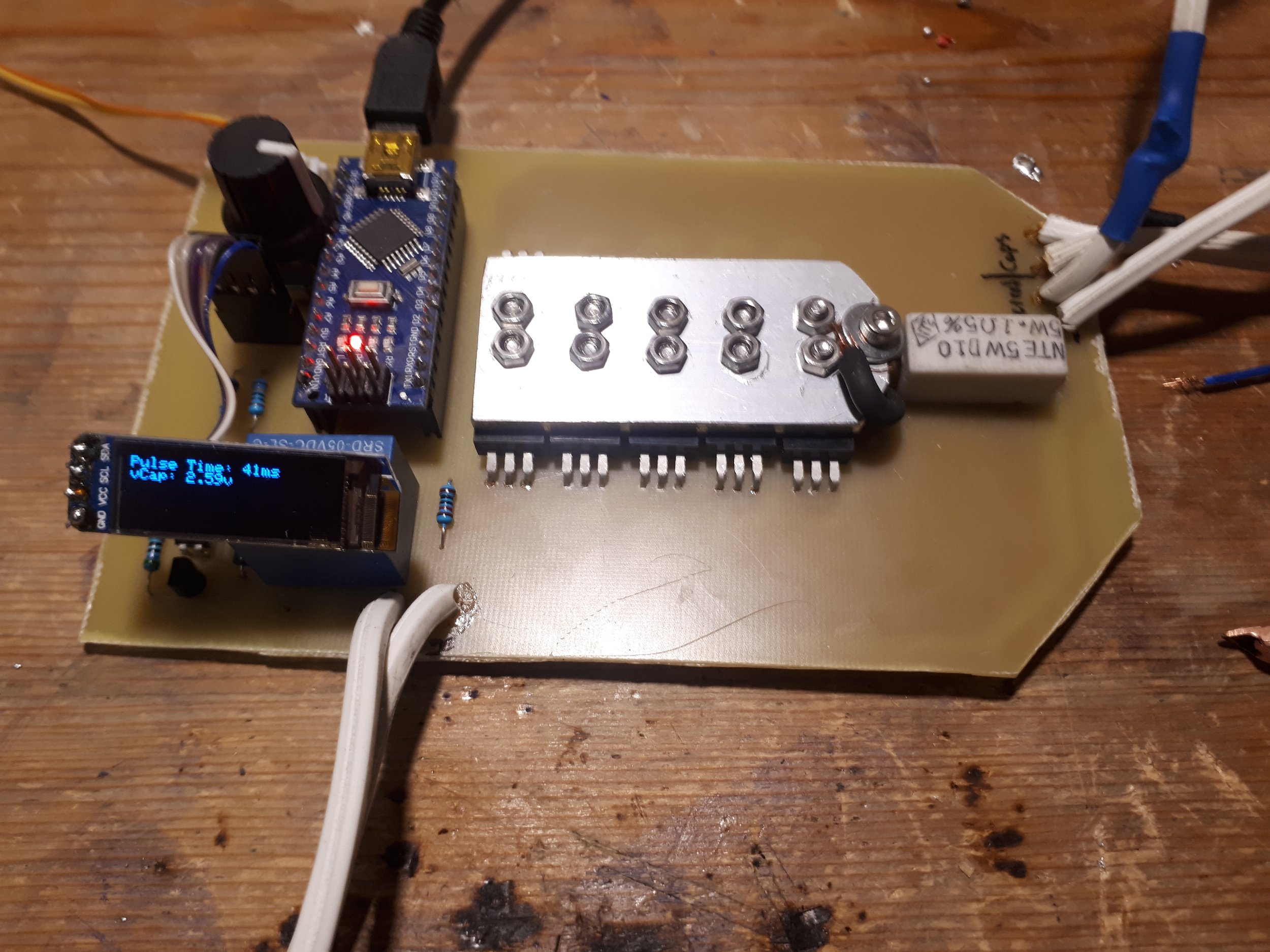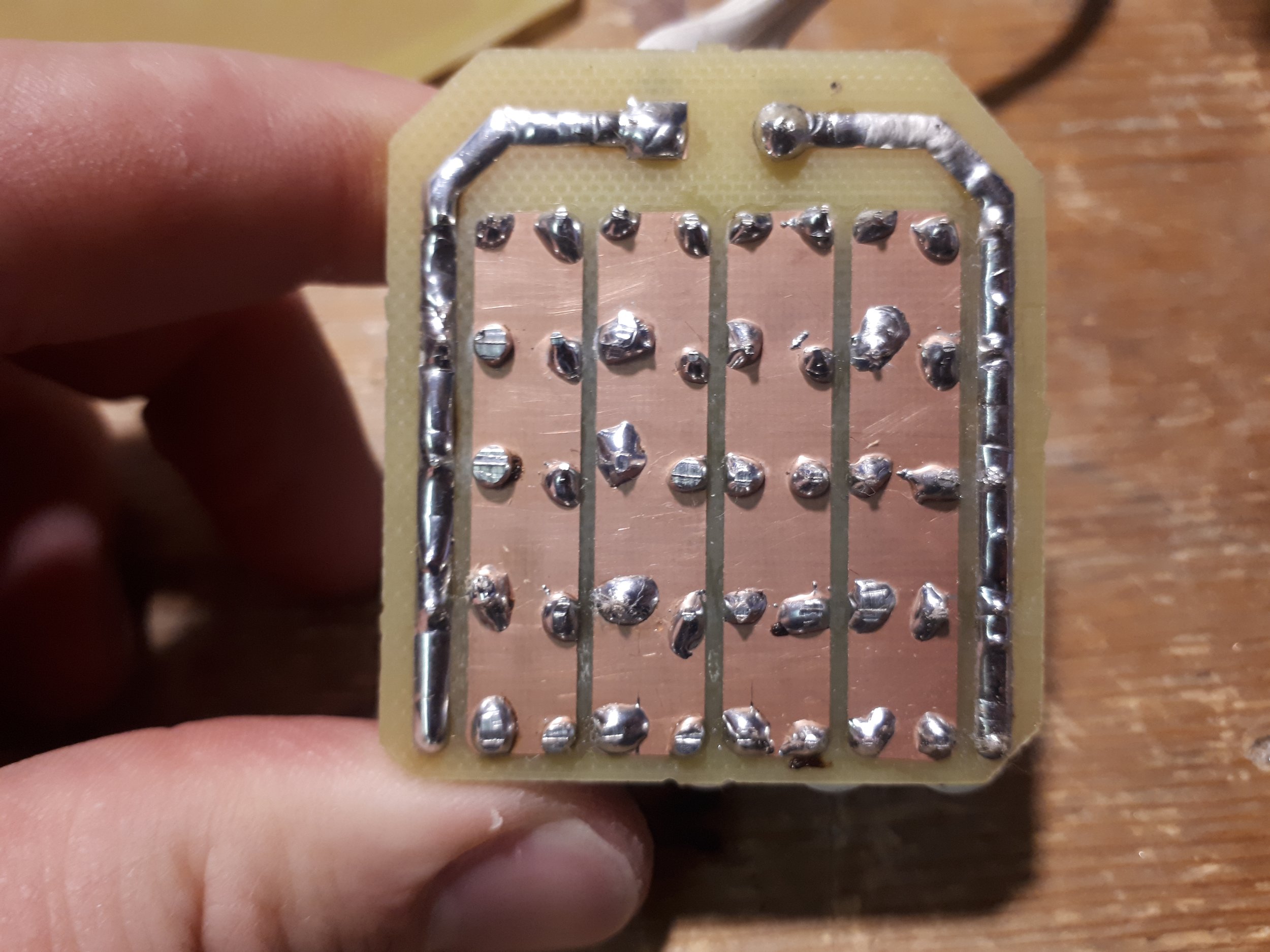After coming into posesssion of a good handful of 18650 cells, as well as a bunch of 3F supercapacitors, I set out to make my own spot welder for the purpose of making some DIY battery packs for various purposes. Of course, the easiest solution for DIY spot welders is something like a car battery, but I was interested in seeing what was possible with the parts I had on hand. I also had a bag of cheap P30NO6LE mosfets which I figured would be able to handle the massive current spikes if I were to put enough in series. They are also handy because they are CMOS level mosfets, so I was able to drive them from the Arduino directly.
The built was relatively straightforward- an Arduino nano connected to a footswitch would pull the gates high on all of the mosfets at once, for a variable pulse time adjustable via an attached potentiometer. I also included pads to attach a tvs diode between the gate and the ground of each mosfet, as well as from the drain to ground on each one in an attempt to protect them against the crazy transient voltage spikes they would be subjected to.
The electrodes were made from copper water pipe ground down to a point at one end.
A 0.1 ohm resistor was connected in series to the positive electrode initially for testing, but this was removed later on in order to maximize the amount of energy discharged.
Ultimately I wasn’t quite able to discharge enough energy from the capactiors for long enough to get a good weld, and with each charge/discharge cycle they got pretty hot. So although I wasn’t quite able to call the project a success, it was an interesting experiment and a good learning experience.





